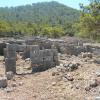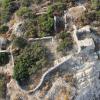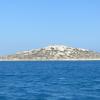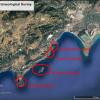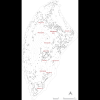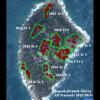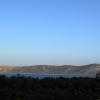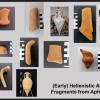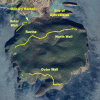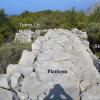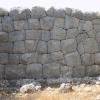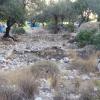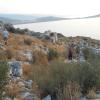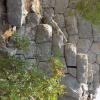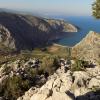Description
Under the direction of Dr. Günder Varinlioğlu of Mimar Sinan Fine Arts University in Istanbul Turkey, the Boğsak Archaeological Survey Project has been ongoing since 2010. The survey team is investigating a small, minimally inhabited islandscape on the south Anatolian coast (Silifke district / Mersin province). The significance of this region arises less from its immediate history than it does from its situation straddling crucial sea lanes to important nearby places. Approximately 18 km southwest of modern day Silifke (ancient Seleucia on the Calycadnus), the survey region incorporates several small, yet, significant archaeological sites, including İncekum (perhaps ancient Ağa Limanı), Boğsak (ancient Limen Nesoulion), Boğsak Island (Asteria and Akra Epinesia), Tahta Limanı (perhaps ancient Palaia), Dana Island (ancient Pityoussa), and Ovacık (ancient Aphrodisias). Despite the barrenness and isolation of this islandscape, it remains noteworthy for two recurring features: an array of fortified complexes that date to Pre-Roman eras and a cluster of dense-packed settlements of Late Antiquity. There is minimal evidence of settlement in between, suggesting that the pattern here conforms with the model of rollercoaster demographics (Bevan and Conolly 2013). Roller-coaster demographics has been used to explain the recurrent pattern of temporary settlement followed by relative abandonment at remote Mediterranean islands of limited carrying capacity. This comparatively discontinuous record of human activity furnishes a less complicated palimpsest than settlements characterized by sustained occupation, thus, affording potentially greater clarity for those eras when wider connections and commensurate geopolitical and economic linkages transpired.
We present here the process ceramics and artifactual remains that result from systematic pedestrian surveys conducted at Boğsak Island (2015 and 2016/17), Dana Island (2016-2019), Aphrodisias (2017-2019), and Tahta Limani (2016-17). The pedestrian surveys were directed by Nicholas Rauh (Purdue U.) and Noah Kaye (Michigan State U.). The linked datasets display more than 2500 fragments of processed ceramics, glass, metal, and stone encountered at these sites. Each dataset includes identifications, descriptions, measurements, and images of the remains as well as location information including survey transect, unit, and georeferenced find locations. Dataset columns incorporate drop-down menus that enable the user to filter the material for refined searches. Each item and image is labeled with a DOI to facilitate bibliographical citation.
Content List
Boğsak Archaeological Survey: Processed Ceramics, 2015 (v1.0)
The dataset contains data from the pedestrian survey of the collected ceramic artefacts for the the Boğsak Archaeological Survey in 2015.
Boğsak Archaeological Survey: Processed Ceramics, 2016 and 2017 (v1.0)
The dataset contains data from the pedestrian survey of the collected ceramic artefacts for the the Boğsak Archaeological Survey in 2016 and 2017
Dana Island Archaeological Survey: Processed Ceramics, 2016 through 2019 (v1.0)
This dataset contains the processed ceramics of the pedestrian survey conducted on Dana Island by the Bogsak Archaeological Survey Project, 2016-2019.
Ovacık (Aphrodisias) Archaeological Survey: Processed Ceramics, 2017 through 2019 (v1.0)
This dataset contains the processed ceramics of the pedestrian survey conducted at Ovacık - Aphrodisias by the Boğsak Archaeological Survey Project, 2017-2019.
Tahta Limanı Archaeological Survey: Processed Ceramics, 2015 and 2017 (v1.0)
This dataset contains the processed ceramics of the pedestrian survey conducted in the areas of Tahta Limanı and Terimini by the Bogsak Archaeological Survey Project, 2016-2017.
The Boğsak Archaeological Survey Collection contains descriptions of more than 3500 pottery fragments collected between 2015 and 2021. The collection consists of five geographically distinct datasets.
Cite this work
Researchers should cite this work as follows:
- Varinlioglu, G.; Rauh, N. K.; Pejša, S.; Kaye, N. (2022). Processed Ceramics of the Boğsak Archaeological Survey Project. Purdue University Research Repository. doi:10.4231/25Y6-BY07
Tags
Bogsak Archaeological Survey Team (BOGA): Processed Ceramics of the BOGA Pedestrian Survey, 2015-2019
This publication belongs to the Bogsak Archaeological Survey Team (BOGA): Processed Ceramics of the BOGA Pedestrian Survey, 2015-2019 group.
